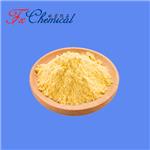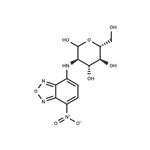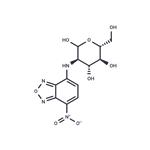2-NBDG is a fluorescent derivative of glucose whose uptake is competitively inhibited by D-glucose , but not L-glucose or sucrose, in E. coli. It has been used to monitor glucose uptake by bacteria and live mammalian cells and in tumor biopsies. 2-NBDG displays excitation/emission maxima of 475/550 nm, respectively.
2-NBDG is a fluorescent glucose uptake indicator, used in real-time confocal, high-resolution, or wide-field fluorescence microscopy as well as in flow cytometry.
1) Yoshioka?et al. (1996),?A novel fluorescent derivative of glucose applicable to the assessment of glucose uptake activity of Escherichia coli; Biochim. Biophys. Acta,?1289?5
2) Yamada?et al. (2000),?Measurement of glucose uptake and intracellular calcium concentration in single, living, pancreatic beta-cells; J. Biol. Chem.,?275?22278
3) Loaiza?et al. (2003),?Glutamate triggers rapid glucose transport stimulation in astrocytes as evidenced by real-time confocal microscopy; J. Neurosci.,?23?7337



